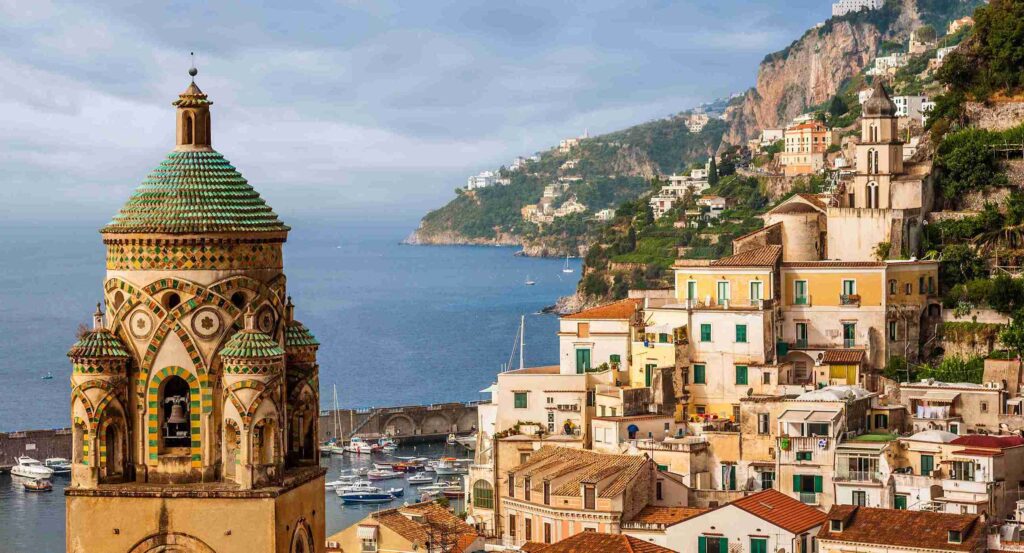Amalfi Coast, Italy – Travel Tips
Category
Categories
Popular Articles

**Overview of the Destination**
Amalfi Coast, popularly known as the “Pearl of Campania,” beautifully stretches along the southern edge of Italy’s Sorrentine Peninsula. This spectacular destination is known for its picturesque landscape, brimming with steep, craggy cliffs, vibrant pastel-colored houses, lush orchards, and breathtaking azure seas. A UNESCO World heritage site, it’s famed for its unique aesthetics, cultural heritage, and the famously sweet limoncello liqueur.
**Best Time to Visit**
The Amalfi Coast is an all-year-round destination, but the best times to visit are between April and June when spring blooms lighten up the coast, and the climate is delightful. September and October also offer pleasant temperatures and fewer crowds. If you want to soak up the local culture, consider planning your visit around the famous Carnival of Maiori in February-March or The Festival of Sant’Andrea in late June and November.
**Climate & What to Pack**
The Amalfi Coast experiences a Mediterranean climate with hot, dry summers and mild, wet winters. In summer (July-August), temperatures range from 26-30°C, while in winter (December-February), they fall to 10-15°C. Rainy months are October and November. Opt for lightweight clothing in the summer, add a jacket or a warm sweater for the cooler evenings in spring and autumn. Don’t forget to bring comfortable, sturdy shoes for hiking the coastal paths and a swimsuit for beach lounging or sea swimming.
**Getting There**
The nearest major airport is Naples International Airport (NAP). From Naples, you can take a bus, private transfer, or ferry to the Amalfi Coast. It’s worth noting though that the journey can be long, winding, and potentially crowded. Ensure to check and meet all visa or entry requirements if you’re traveling from abroad.
**Getting Around Locally**
Once you’re in the Amalfi Coast, there are numerous ways to get around. The area is served by SITA Sud buses and ferries. Taxis and rideshares are available, but they can be quite pricey. If you’re a skilled, confident driver, you may consider renting a car or scooter. Do note that parking can be challenging, and driving on the narrow, winding coastal roads is not for the faint-hearted. The towns themselves are relatively small and perfect for exploring on foot.
**Safety Tips**
The Amalfi Coast is generally regarded as a safe destination. However, as in any tourist location, it’s necessary to remain vigilant for pickpocking. Avoid remote areas after dark and secure your valuables. It’s respectful to follow the Italian social etiquette for greetings, dressing modestly, particularly in churches, and observing quiet rules in the late evening.
**Top Things to Do & See**
Amalfi Coast’s key attractions include the beautiful towns of Amalfi, Positano, and Ravello, each renowned for their unique charm and stunning views. Don’t miss the historic churches like Amalfi’s Cathedral of St. Andrew and the turquoise Grotta dello Smeraldo. For an adventurous twist, explore the Path of the Gods hiking trail or embark on a boat tour to Capri Island. There’s beauty around every corner!
**Where to Stay**
Luxury travelers often gravitate towards Positano with high-end options such as the opulent Le Sirenuse. Mid-range travelers can find good value in Amalfi or Minori, with their array of family-run guesthouses. Budget travelers might prefer the more affordable Agerola or Praiano. Always remember to booking your accommodations well in advance, especially in the peak season.
**Food & Local Cuisine**
The Amalfi Coast is a foodie’s paradise. Must-try local dishes include “Scialatielli ai Frutti di Mare” (seafood pasta), “Delizia al Limone” (lemon delight cake), and of course, the local limoncello. Opt for eateries and cafes off the main tourist roads for more authentic and reasonably priced fare.
**Cultural & Practical Tips**
The official currency is the Euro, and the official language is Italian, though English is widely spoken in tourist locations. Tipping is appreciated, but not obligatory. Italian plugs are type F, with standard voltage 230 V. Most places offer free Wi-Fi.
**Sustainable or Responsible Travel Tips**
Responsible travel is highly encouraged in the Amalfi Coast. Respect the local customs and heritage, stick to marked trails when hiking, and avoid littering. Use refillable water bottles and reusable shopping bags to minimize plastic waste.
**Personal Travel Tip**
My final tip: embrace the slow pace and la dolce vita of Amalfi Coast. Don’t rush. Savor the experiences, the food, the scenic views, and the charm of the local people. Remember, you’re not just visiting; you’re creating memories. Buon viaggio!










